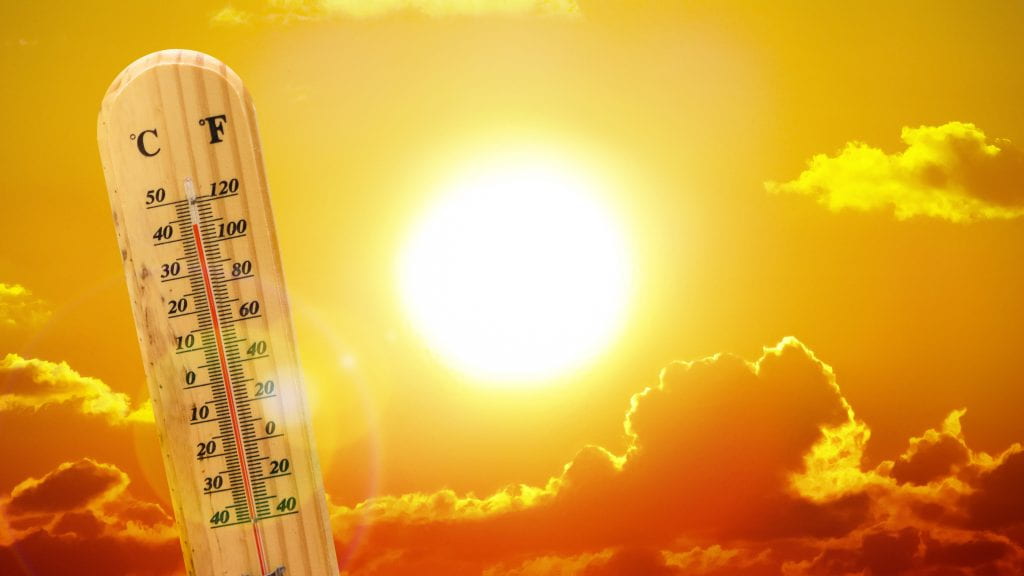Over 10 million people in 8 Midwestern cities experience temperatures elevated by at least 8 degrees because of localized environmental factors, and up to 12 degrees in Chicago.

Analysis of urban heat islands identifies neighborhoods that expose 41 million residents to significantly higher temperatures
Census tract-level data exploration of 44 U.S. cities finds more than ten-percent of Chicago, New York, San Francisco, and Washington residents experience temperatures elevated by at least ten degrees Fahrenheit because of localized environmental factors
Princeton, NJ – July 26, 2023 – As global temperatures climb, environmental factors in some city neighborhoods amplify heat even further, creating urban heat islands. A new Climate Central analysis of census tract-level data for 44 U.S. cities found that the urban heat island effect elevates local temperatures by at least eight degrees Fahrenheit in areas where 41 million people live, exposing residents to higher risks of heat-related illness and higher cooling costs.
Nine cities are home to at least one million people in urban heat islands where temperatures are elevated by at least eight degrees: New York (7.1 million), Houston (4.3 million), Los Angeles (3.3 million), Dallas (2.2 million), Chicago (2.1 million), San Antonio (1.5 million), San Diego (1.4 million), Phoenix (1.3 million), and Detroit (1.0 million).
The urban heat island effect exposes more than 70% of residents to at least eight-degree temperature elevations in Detroit (86%), New York (78%), Dallas (75%), New Orleans (74%), and Houston (73%).
In some neighborhoods, the urban heat island effect boosts temperatures by ten degrees Fahrenheit or more, impacting more than ten-percent of residents in Chicago, New York City, San Francisco, and Washington, DC. (Nearly 3.8 million New Yorkers, or 41% of the city’s population, experience temperatures elevated by at least ten degrees, attributable to local environmental factors.)
“People in urban heat islands experience the amplified effects of climate change, especially during summer heat streaks that force millions to face higher temperatures than their neighbors,” Jen Brady, Climate Central senior data analyst said. “Changes to the built environment can cool these neighborhoods, but until global temperatures stop rising, city residents will face increasingly steeper challenges to stay safe during periods of extreme heat.”
Temperatures in urban heat islands are influenced by localized environmental factors including albedo (the degree to which surfaces like roofs and roads reflect or absorb heat), the amount of permeable surfaces, tree cover and greenspaces, building heights and airflow, and population density–which influences the heat generated by human activities, such as running air conditioners. Climate Central assessed the influence of each of these factors on U.S. census tracts, based on reported land cover zones within each tract, to calculate the urban heat island effect on populations reported in the 2020 U.S. Census.
A summary findings with links to data and maps for all cities, as well as customizable KML mapping files are available at: https://www.climatecentral.org/climate-matters/urban-heat-islands-2023
Contact: Peter Girard, Director of Communications, Climate Central: pgirard@climatecentral.org or +1-609-986-1999
About Climate Central
Climate Central is a non-advocacy, non-profit science and news organization providing authoritative information to help the public and policymakers make sound decisions about climate and energy.
Responses from the Midwest Climate Collaborative
“Climate Central’s analysis of urban heat islands highlights eight of our Midwestern cities, where over ten million people experience temperatures elevated by at least eight degrees, and up to twelve degrees in Chicago,” emphasized Heather Navarro, director of the Midwest Climate Collaborative. “In the Midwest these high temperatures exacerbate disparities by increasing energy burdens on those living in low-income households and placing greater health risks on people who work outside. The MCC is exploring nature-based solutions, such as urban tree canopy, to mitigate these factors, and many in the Midwest are installing white roofs and other building upgrades to make homes more climate resilient.”
Heather Navarro is the inaugural director of the Midwest Climate Collaborative.
Contact: hnavarro@wustl.edu; 314.808.4345
“The combined effects of human-caused climate change and the urban heat island are at the forefront of discussions amongst Chicago-based researchers, community organizations, and public health agencies that are seeking to identify heat-vulnerable populations and design and implement effective adaptation measures,” said Professor Daniel Horton from Northwestern University, a founding member of the Midwest Climate Collaborative. “Analyses like Climate Central’s are valuable in helping us identify neighborhoods and populations within Chicago that may face disparate environmental stressors and impacts. Given the import of these findings, it is essential to take the next step and ground truth these analyses using in situ observations. Fortunately, Chicago is well set up to do just that. This summer the City is participating in NOAA’s Heat Watch campaign wherein volunteers will map air temperatures across the city to help identify temperature hotspots. In addition, the Department of Energy chose Chicago for one of its Urban Field Lab sites, and monitors are being installed throughout the city to provide high quality observations across the City for the next several years. Together, all of these efforts should help us better prepare for the future and protect our most vulnerable residents.”
Daniel Horton is an Assistant Professor in the Department of Earth and Planetary Sciences at Northwestern University, PI of the Climate Change Research Group, co-lead of the Buffett Institute for Global Studies Defusing Disasters working group, and a Paula M. Trienens Institute for Sustainability and Energy Faculty Affiliate.
Contact: daniel.horton@northwestern.edu
About the Midwest Climate Collaborative
The Midwest Climate Collaborative (MCC) is a multi-sector network working for a carbon neutral, climate resilient, interconnected Midwest region. Its members include institutions of higher education, local governments, nonprofits, and businesses. The MCC is hosted by Washington University in St. Louis. Climate Central, Inc. and Northwestern University are founding members of the MCC.
